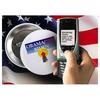Even so, the problems that occurred, "reinforce [that] this is an election system that's not equipped to handle a high turnout," she said. "And the high turnout is fantastic. People are excited to vote and participate in their democracy and that is a great thing. It seems like people are hanging in there and are determined to cast their votes."
Doug Lewis, the executive director of the National Association of State Election Directors, a professional group that represents election officials in the nation, said the election was like any other -- with some troubles and difficulties as always. "None of it's ever perfect," Lewis said. "You go and have an election and no matter ... how much you plan, some things just don't work on Election Day. But you're usually able to correct those problems quickly."
"The truth of the matter is [today's election issues] are not systemic, it's not overwhelming," Lewis said. "It's not going to cause an uproar. It's pretty much a normal Election Day, even though it's a heavy turnout Election Day."
Election officials who investigated reports that came into election hotlines were often unable to duplicate or substantiate the reports, he said. "From our standpoint, we're not seeing enormous numbers of incidents reported that ... you can tie down to actual problems," he said. "We see a whole lot of anecdotal problems that always get reported on Election Day, but when you ask for specifics, they tend to disappear."
In its national update Tuesday afternoon, Jon Greenbaum, the legal lead for e-voting watchdog group, the Election Protection Coalition, said that problems reported with machine voting in Florida, California and other states show that the election community has not yet devised a satisfactory system. As far as solving the "machine problem, all we've done is gotten rid of punch cards and lever machines."
"Some of that is due to problems within the machines themselves, and some is due to issues involving humans," he said. "This is an area that really calls out for some investment in terms of technology; greater uniformity would also help. If we had greater uniformity for the type of technology that is being used, it would be easier to fix problems. Take Virginia -- you have eight or nine different types of equipment being used. You can't take voting machines from one jurisdiction and have another jurisdiction that needs them use them. You can't have the state stock up, because there are too many different types of machines used."
In Ohio, Jeff Ortega, a spokesman for Secretary of State Jennifer Brunner, said that with an expected voter turnout of 80 percent, there were some delays of up to an hour at some polling places. But most lines moved much faster than that across the state.

